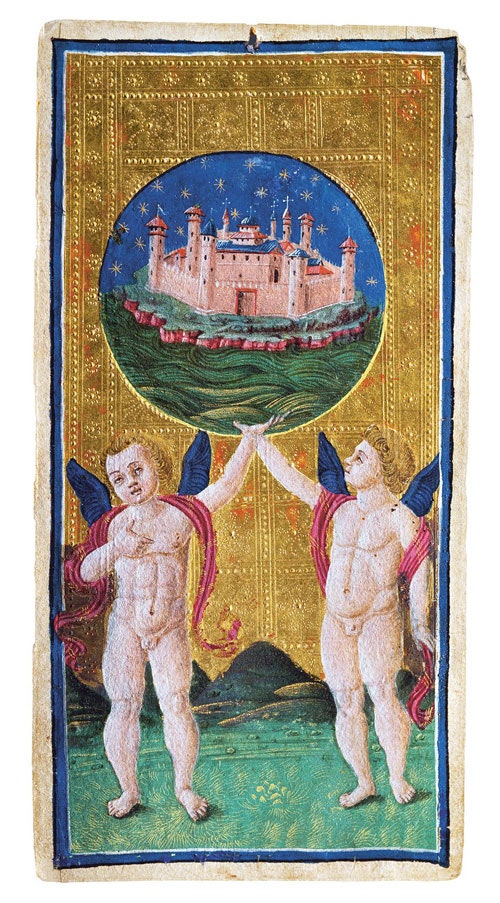A tool for modern-day sorcerers’ apprentices and an instrument for personal development, the tarot enjoys undeniable popularity today. However, this has not always been the case. Praised by secret societies, sects of all kinds and some mystical Freemasons, this game could have ended up in oblivion if it had not become the prerogative of many artists in the 20th century, as revealed by Jessica Hundley , Thunderwing, Johannes Fiebig and Marcella Kroll in Tarota beautiful book, published by Taschen. How did these few cards steeped in symbols take the world by storm?
To understand this, we have to go back to 14th century Italy. At that time, the tarot was not yet the one we know today. It is above all a deck of gleaming cards, gilded with leaf, stuffed with references to the occult sciences, alchemy and astrology, with which the aristocrats of Milan and Florence have fun during games similar to the bridge. All without any other pretension than to pass the time. It sometimes happens that they serve as a support to tell a story, or even a criticism against the court in a roundabout way. It’s because the symbolic imagery is already beautiful and well present and makes it possible to secretly convey progressive or even provocative ideas.
The World: Bonifacio Bembo & Francesco Sforza, “Visconti Brambilla Tarot”, 1463
However, it was not until the 18th century that the tarot became a divinatory instrument, associated with a methodology developed by many figures of the occult sciences. Of which the Swiss scholar and Freemason belongs Antoine Court de Gebelin, one of the first to claim that this set of archetypes can help predict the future. The man has nothing of an enlightened, however, he is an emeritus researcher whose publications on occultism appear in particular in a review published by benjamin franklin.
When he died in 1784, a whole guard of mystics took up the torch and substantiated his theories and methodologies on how to read the future in the cards. Alphonse Louis Constantsaid mage Eliphas Levi for example, will play a key role in the dissemination of certain methods (especially his own) and will influence many secret societies of the time. His mystical aura comes from his witchcraft experiences with a couple who think they are the reincarnation of Louis XVI and Marie-Antoinette. Study of alchemy, preparation of spells… So many activities to which this self-proclaimed magus devoted himself with his couple of friends around the 1830s. For him, “the tarot is the primitive book and the keystone of the occult sciences. His disciple, a certain Papushas actually constituted a sect, theKabbalistic Order of the Rose-Cross, which is dedicated to “the study of mysticism and spiritual concepts” which they call “Christian Kabbalah”. It is they who will enrich the tarot with a Kabbalah and Christian dimension, adding ever more mysticism to these fascinating cards.
On the other side of the Atlantic, it is the Brotherhood of Light which arises as a reference for questions related to cartomancy. Its founder, CC Zain is a prolific author. He certainly doesn’t have any wizarding friends who think they’re royals, but he knows a thing or two about herbalism and astrology, among other things. He will create his own game, the Sacred Tarotaccompanied by an illustrated book by the artist Gloria Beresford. For him, the use of these cards can serve for self-analysis and the development of a higher level of consciousness. In short, a great program that continues to attract many followers around the world, even today.
We wish to thank the author of this write-up for this incredible material
The secret history of the tarot between sects, art and divination
You can view our social media pages here and other pages related to them here.https://nimblespirit.com/related-pages/

